The katydid, as green as the leaves around it, is feeding on a yellow rose. It is paying no attention to the circling honey bees.
The bees want nectar, not an encounter with a critter far bigger than they are.
The katydid slowly moves from one devastated blossom to a bud.
The honey bees head off for other blossoms.
Such was the scene in our pollinator garden in Vacaville, Calif. last weekend with a fork-tailed bush katydid claiming a yellow rose.
According to the University of California Statewide Integrated Pest Management Program (UC IPM), the fork-tailed bush katydid, Scudderia furcata, is a pest of fruit such as citrus, pear, nectarine, apricots, plums, blueberries and the like.
It also seems to like our yellow rose, "Sparkle and Shine," a variety related to the "Julia Child Rose." We purchased it back in 2013 at the annual May rose sale hosted by the California Center for Urban Horticulture (CCUH) at Foundation Plant Services, on Hopkins Road, west of the central campus.
Honey bees generally don't like commercial roses (they prefer nectar-rich plants like lavender, African blue basil, sedum, sunflowers, bee balm and salvia), but they do this one.
So does the katydid.
Attached Images:
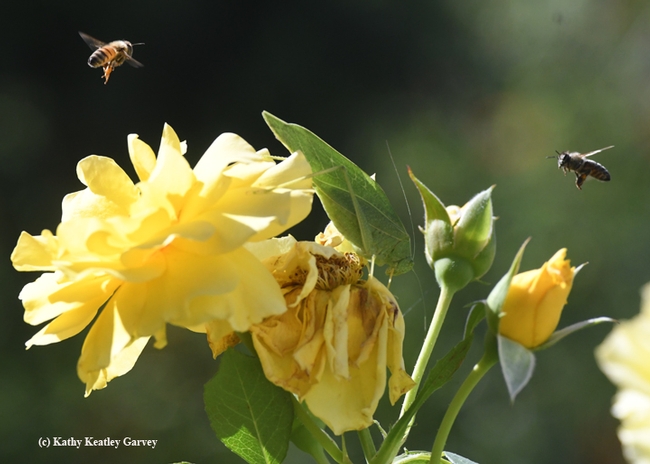
Honey bees circle a fork-tailed bush katydid feeding on a yellow rose. (Photo by Kathy Keatley Garvey)
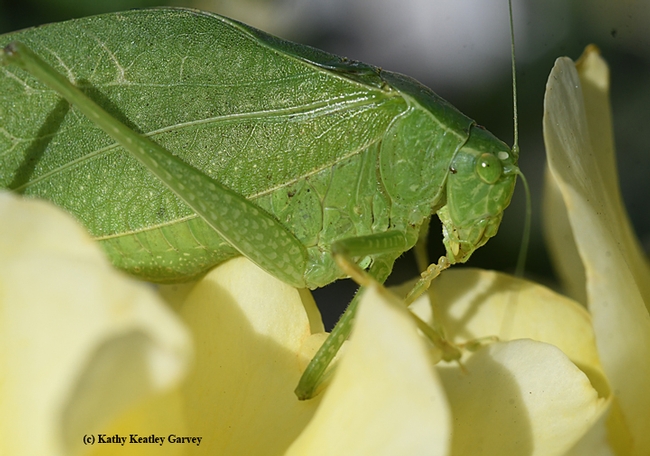
Close-up of the fork-tailed bush katydid. (Photo by Kathy Keatley Garvey)
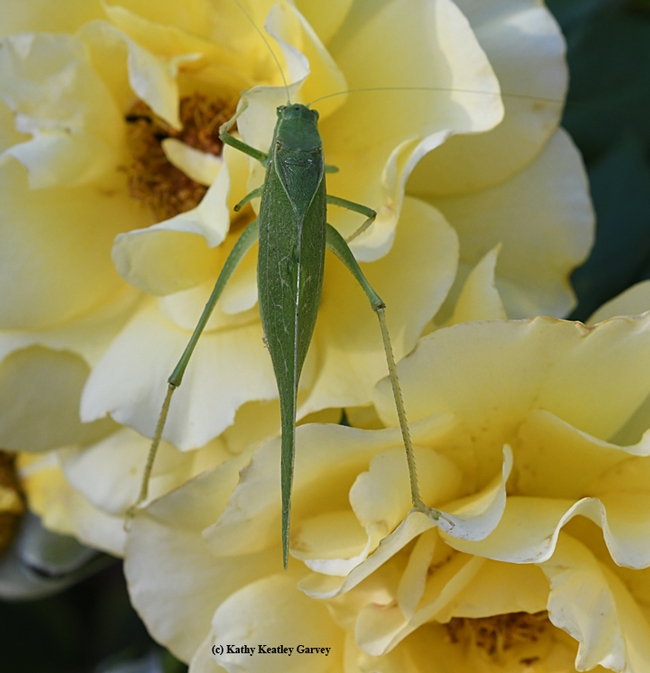
Dorsal view of the fork-tailed bush katydid feeding on a yellow rose. (Photo by Kathy Keatley Garvey)

Fork-tailed bush katydid seems to be saying "This bud's for me."(Photo by Kathy Keatley Garvey)
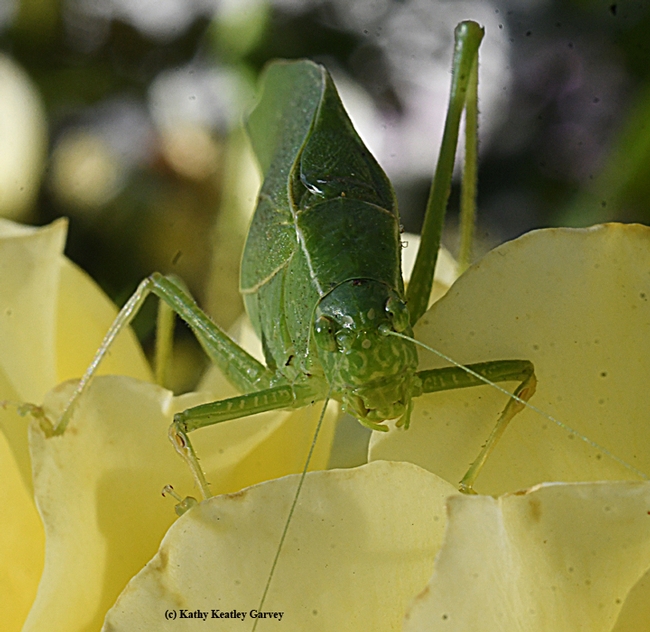
Eye-to-eye with a fork-tailed bush katydid. (Photo by Kathy Keatley Garvey)
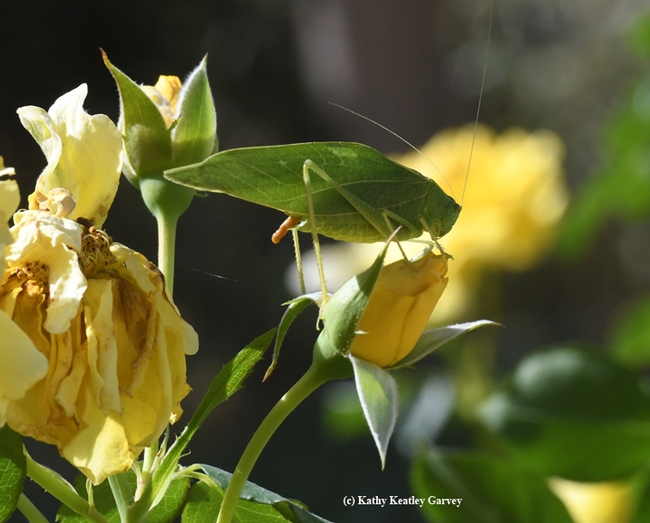
Oops! Check out the frass. (Photo by Kathy Keatley Garvey)